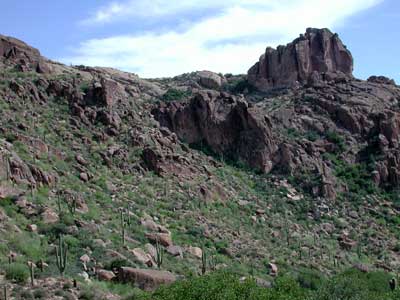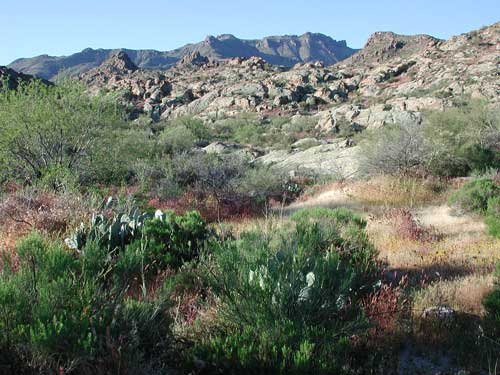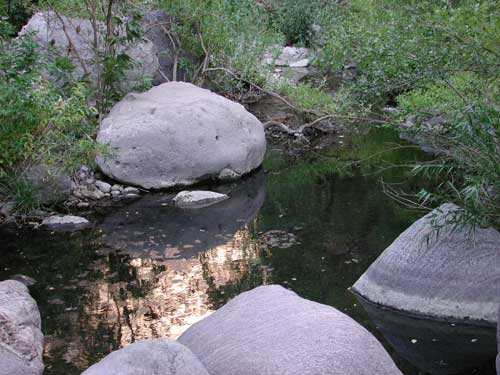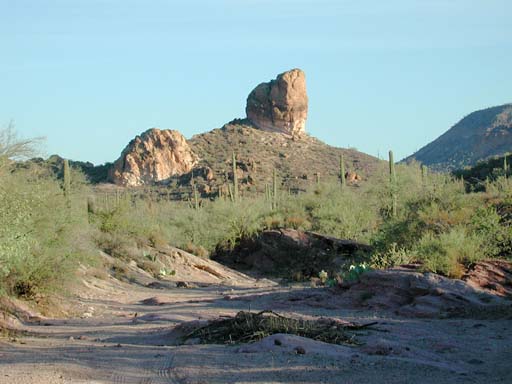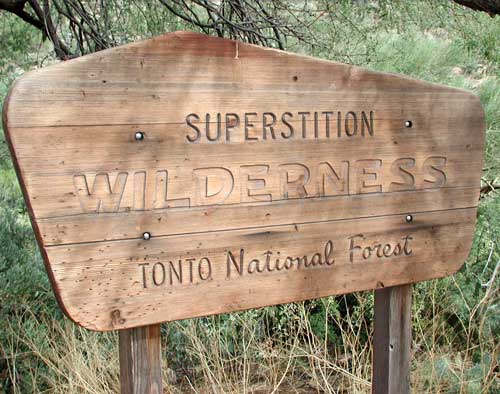
The golden beauty of deserts, mountains, sheer-walled canyons, wildlife, and solitude in the Superstition Wilderness are largely protected within the United States Wilderness System. As urbanization creeps up to the boundary the wisdom of having protected this area will become all the more evident. Recently, however, fires, many man-caused, have burned large areas of this treasure. Nature will do her best to recover, but we must be better stewards.
The trekker symbols indicate some Superstition Wilderness locations described by Sonoran Desert Naturalist. View Superstition Mountains in a larger map
